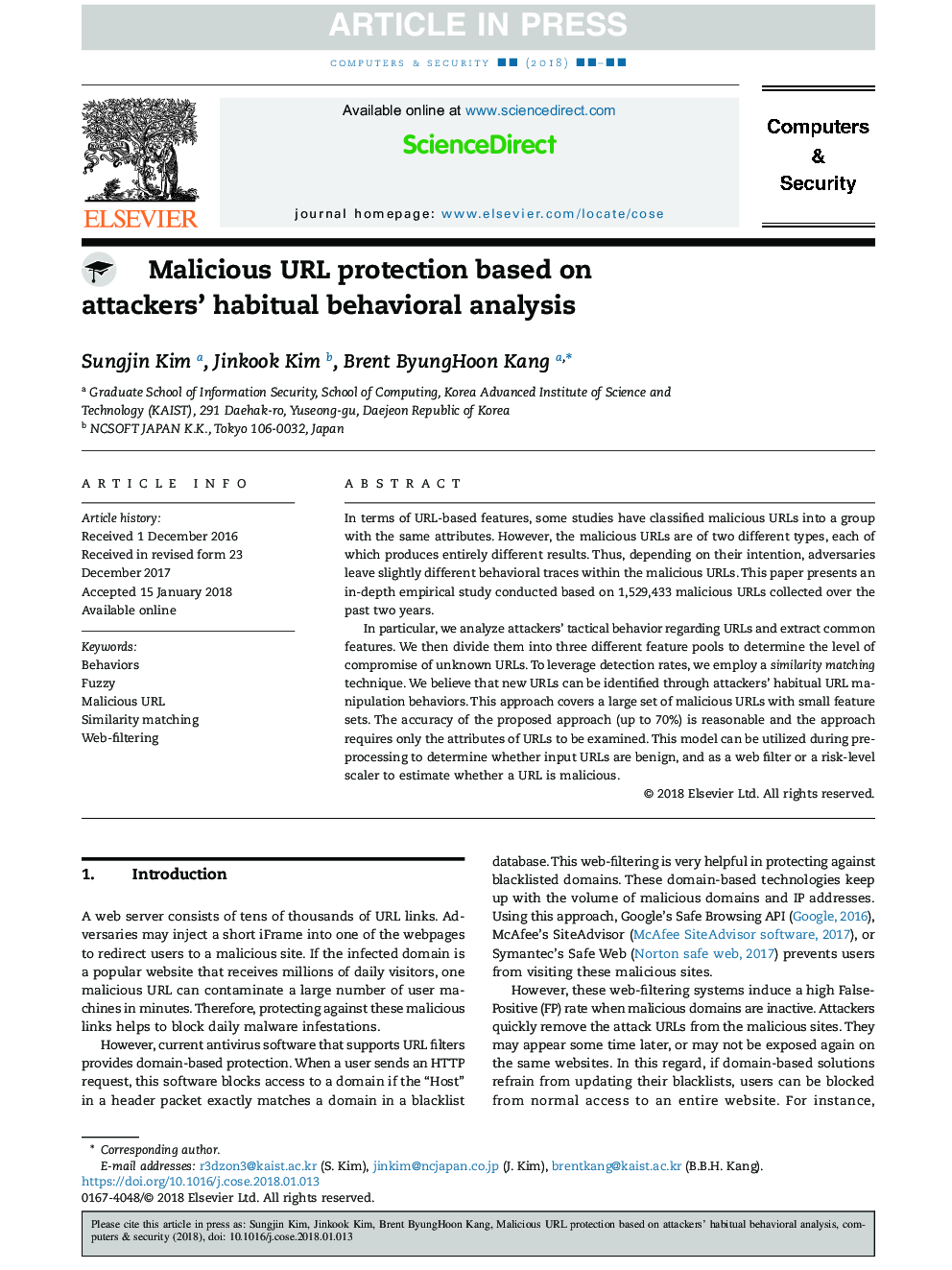| Article ID | Journal | Published Year | Pages | File Type |
|---|---|---|---|---|
| 11002566 | Computers & Security | 2018 | 17 Pages |
Abstract
In particular, we analyze attackers' tactical behavior regarding URLs and extract common features. We then divide them into three different feature pools to determine the level of compromise of unknown URLs. To leverage detection rates, we employ a similarity matching technique. We believe that new URLs can be identified through attackers' habitual URL manipulation behaviors. This approach covers a large set of malicious URLs with small feature sets. The accuracy of the proposed approach (up to 70%) is reasonable and the approach requires only the attributes of URLs to be examined. This model can be utilized during preprocessing to determine whether input URLs are benign, and as a web filter or a risk-level scaler to estimate whether a URL is malicious.
Keywords
Related Topics
Physical Sciences and Engineering
Computer Science
Computer Networks and Communications
Authors
Sungjin Kim, Jinkook Kim, Brent ByungHoon Kang,
